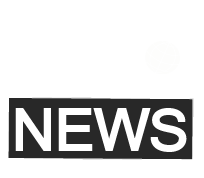Reviews
5 Tools Every Freelancer Needs for Financial Security in 2025

Freelancing sounds like freedom—and it can be. No boss, no commute, no forced “team-building” exercises. But let’s be honest: that freedom can also feel like freefall.
No predictable paycheck. No employer-funded retirement. No safety net unless you build one yourself. And in 2025, with the economy shifting under our feet every few months, financial security isn’t just smart—it’s survival.
So, how do you actually do that? You need tools. Systems. A little digital scaffolding to hold your business—and your sanity—together. Below are the essential tools freelancers should lean on this year to stay secure, solvent, and maybe even sleep better.
1. Invoicing & Payment Tools
You’d think sending an invoice would be the easy part. Type some numbers, send them off, and wait for cash. Except… It’s not. Miss one zero, forget a due date or use an ugly template, and you’re left wondering why your client hasn’t paid three weeks later.
That’s why it helps to keep invoicing brainless—but still professional.
If you’re not using a full-blown software suite, grab a clean, editable Excel invoice template that does the math, lets you plug in your logo, and saves you from starting from scratch every time. No sign-ups. No subscription. Just a file that makes you look like you’ve got it together—even when you’re eating cereal over your keyboard.
And here’s the thing: clients pay faster when the invoice is clear. They don’t want to guess if tax is included. You make it easy—they pay quickly. Simple as that.
2. Expense Tracking & Budgeting Apps
Here’s the sneaky thing about freelance income: it feels bigger than it is. You get that $3,000 payment and think, “I’m set!” But then taxes, rent, software renewals, and that random thing you bought on a whim eat it up before week’s end.
Budgeting isn’t about being frugal. It’s about being realistic. You need a system.
Apps like YNAB (You Need A Budget) are built for the unpredictable flow of freelance cash. You tell your money where to go before it disappears. If that sounds intense, Monarch, Spendee, or even Goodbudget offer a gentler learning curve.
3. Tax Preparation & Savings Tools
Quarterly taxes: the freelance rite of passage nobody wants. If you’re still setting calendar reminders and guessing how much to save, please don’t. That’s stress you don’t need.
Tools like Keeper Tax, Bonsai Tax, or QuickBooks Self-Employed can automatically track write-offs and calculate your estimated payments before the IRS comes knocking.
Here’s a rough benchmark: stash 25–30% of every payment in a tax-specific account. Yes, even the small gigs. Someone once told me to treat that tax account like it’s cursed. “Don’t touch it. Don’t look at it. Pretend it’s haunted.” Sounds extreme—but unforgettable.
4. Retirement & Emergency Fund Planning
Most freelancers don’t have a “retirement plan”—we have vibes.
But here’s the cold truth: freelancing is amazing, but it doesn’t come with a pension. Or a matching 401(k). Or, you know, any long-term structure. You’ve got to build your own.
Start small with a Roth IRA or SEP IRA—platforms like Betterment, Fidelity, or Wealthfront make it ridiculously easy to set up. No financial jargon, no minimums. Just consistent deposits, even if it’s $50 a month.
5. Insurance & Legal Protection
It’s not enticing. But it’s necessary. Freelancing means you’re the business. And if you get sued, sick, or stuck, you’re on your own unless you’ve got some backup.
Health insurance is the obvious one. But look beyond that. Professional liability insurance protects you if a client claims your work caused them damage (even if it didn’t). Disability insurance matters, too—what happens if you can’t type for 6 months?
And legal contracts? Non-negotiable. Don’t start work without one. Services like HelloBonsai or LegalZoom offer simple templates that make you look way more put-together than you feel.
Also, don’t be afraid to push back when a client says, “We don’t really use contracts.” You’re not being difficult. You’re protecting your livelihood.
Final Word: Build as You Go
You don’t have to fix everything overnight. You’re not failing if you haven’t opened an IRA or set up a tax account yet.
But the longer you put it off, the harder it gets to breathe. Pick one tool. Try one app. Set up one safety net. Then the next. That’s how real, gritty financial security starts. Not all at once—but one brick at a time.

-

 US News5 days ago
US News5 days agoJetBlue flight diverts to Tampa after altitude drop injures at least 15
-

 Breaking News8 hours ago
Breaking News8 hours agoAt least 3 dead, 11 injured after UPS cargo plane crashes near Louisville airport
-

 World1 week ago
World1 week agoU.S. Navy helicopter and fighter jet crash in South China Sea; all crew rescued
-

 World2 days ago
World2 days agoStrong 6.3 earthquake strikes northern Afghanistan; felt across Pakistan
-

 World2 days ago
World2 days agoProtesters storm government building in Mexico after killing of local mayor
-

 World3 days ago
World3 days ago10 people stabbed on train in Huntingdon, England
-

 US News6 days ago
US News6 days agoTrump says U.S. will resume nuclear weapons testing ‘on an equal basis’
-

 US News1 week ago
US News1 week agoDamage reported in Kilgore, Texas following tornado warning




